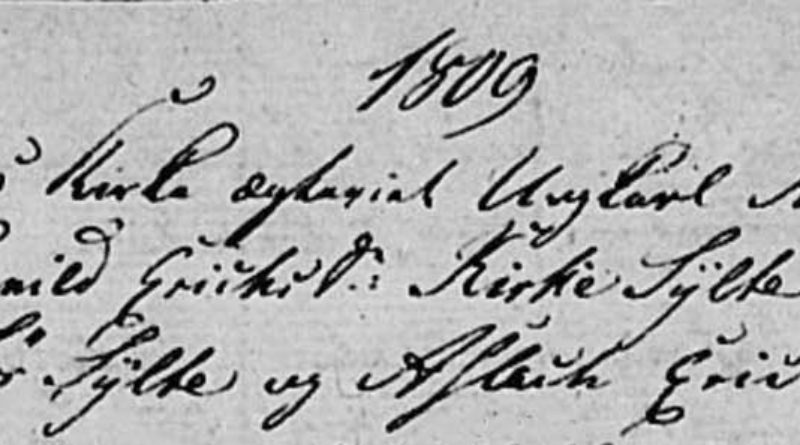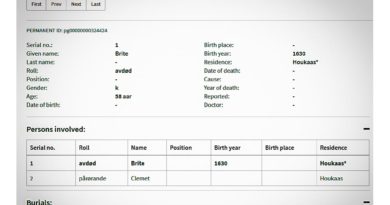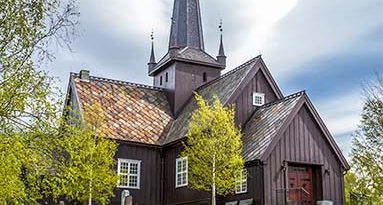Church book chronology
A little trap to look out for in the church books
Before the standard layout of church books was introduced in 1812 we need to look out for inconsistencies in the chronology.
This example was just published on an online forum:
SAT, Ministerialprotokoller, klokkerbøker og fødselsregistre – Sør-Trøndelag, 685/L0952: Parish register (official) no. 685A01, 1745-1804, p. 209
Quick link: https://www.digitalarkivet.no/kb20070910610340
Looking at the right page records 3 through 6, we see that no. 3 took place “Dom: VI, a Pasha” → Sixth Sunday after Easter. In 1776 this was May 19th. Number 4 is dated in plain writing: May 15th. -four days before the previous record. Looking at not only the date but also the localparish where the event took place, we see that record no. 3 took place in Singsaas, while record no. 4 took place in Haaltaalen. These are both localparishes in Haaltalen (Holtålen) parish. The following records seem to be in chronology.
This is due to the fact that before 1812, the minister usually recorded clerical actions from different localparishes in the same church book. This church book was usually kept at the rectory and the minister resorted to taking notes on loose sheets of paper when he visited the different localparishes. Back at the rectory, these notes were transferred to the church book (Thorvaldsen 1996: 84).
 Another trap in the pre-1812 church books is where the minister divided the parishes into different sections. Let’s say he started the book with a record from “localparish A”. The next Sunday he held a service in “localparish B”. Back at the rectory, he leaves a couple of pages blank and records the actions he performed in “localparish B”. He does the same for “localparish C and D”. When the pages allotted to one of these sections are full, he starts a new section a couple of pages after the last record in his book. If we are looking for a person in “parish X”, born in the timeframe 1809 to 1813, we may think we are out of luck when we get to the first record in 1814. In fact, we may only have searched one of the localparishes in this parish. I have walked into this trap myself.
Another trap in the pre-1812 church books is where the minister divided the parishes into different sections. Let’s say he started the book with a record from “localparish A”. The next Sunday he held a service in “localparish B”. Back at the rectory, he leaves a couple of pages blank and records the actions he performed in “localparish B”. He does the same for “localparish C and D”. When the pages allotted to one of these sections are full, he starts a new section a couple of pages after the last record in his book. If we are looking for a person in “parish X”, born in the timeframe 1809 to 1813, we may think we are out of luck when we get to the first record in 1814. In fact, we may only have searched one of the localparishes in this parish. I have walked into this trap myself.
We also find inconsistencies in the chronology in the pre-printed books too. This may appear where the records for males and females are separated in different sections, where one of the sections may advance faster than the other. In birth and death records the sections are usually divided in either a left page-right page layout or a top-bottom layout.
It can also appear in the in- and out-migrated sections where these are presented in a left page-right page layout.
The inconsistencies in the pre-printed church books are normally easier to spot, but we still need to keep this in mind.
Before we leave the church record I linked above we can take away a little Latin lesson. (Like I am the right person to give Latin lessons 🙂 )
Looking at several of the records in these two pages, they start with “Eodem die & loco”. This means “The same day and place (as the record above)”
Source:
Thorvaldsen, Gunnar. Håndbok i registrering og bruk av historiske data. Oslo: Tano-Aschehoug, 1996.






It is very informative. I have a lot of trouble figuring out the dates that are in the liturgical format, where can I go for an easy to understand explanation of this date format?
You might want to check out my article Moveable feastdays in Norway at https://martinroe.com/blog/index.php/2016/04/19/moveable-feastdays-in-norway/
Thank you!!!